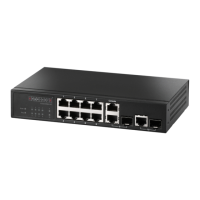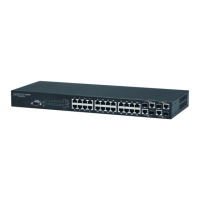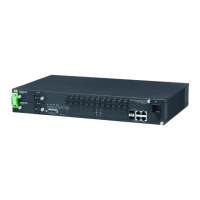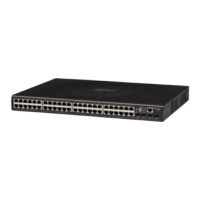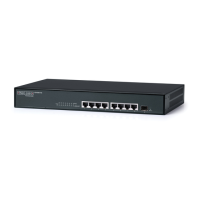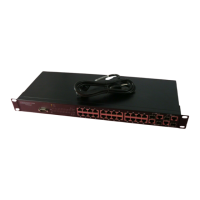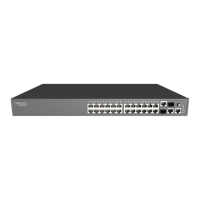C
HAPTER
19
| Using the Command Line Interface
Entering Commands
– 478 –
UNDERSTANDING
COMMAND MODES
The command set is divided into Exec and Configuration classes. Exec
commands generally display information on system status or clear
statistical counters. Configuration commands, on the other hand, modify
interface parameters or enable certain switching functions. These classes
are further divided into different modes. Available commands depend on
the selected mode. You can always enter a question mark “?” at the
prompt to display a list of the commands available for the current mode.
The command classes and associated modes are displayed in the following
table:
EXEC COMMANDS When you open a new console session on the switch with the user name
and password “guest,” the system enters the Normal Exec command mode
(or guest mode), displaying the “Console>” command prompt. Only a
limited number of the commands are available in this mode. You can
access all commands only from the Privileged Exec command mode (or
administrator mode). To access Privilege Exec mode, open a new console
session with the user name and password “admin.” The system will now
display the “Console#” command prompt. You can also enter Privileged
Exec mode from within Normal Exec mode, by entering the enable
command, followed by the privileged level password “super.”
To enter Privileged Exec mode, enter the following user names and
passwords:
Username: admin
Password: [admin login password]
CLI session with the ES3510MA is opened.
To end the CLI session, enter [Exit].
Console#
Table 32: General Command Modes
Class Mode
Exec Normal
Privileged
Configuration
Global
*
* You must be in Privileged Exec mode to access the Global configuration mode.
You must be in Global Configuration mode to access any of the other configuration
modes.
Access Control List
Class Map
IGMP Profile
DHCP
Interface
Line
Multiple Spanning Tree
Policy Map
Time Range
VLAN Database
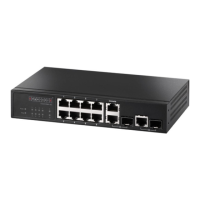
